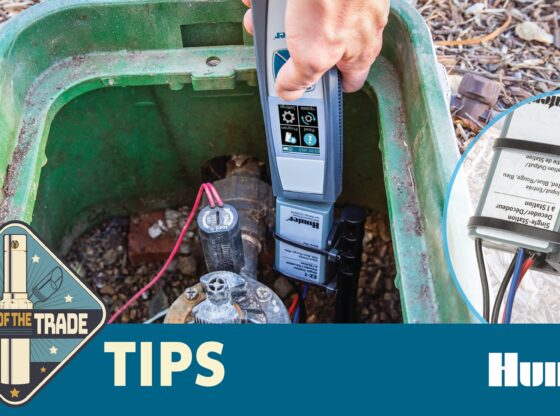According to the American Society of Landscape Architects (ASLA), sustainable designs were a big trend in 2016 landscaping. In the 2016 Residential Landscape Architecture Trends Survey conducted, among the the top trend was rainwater/graywater harvesting. This trend reflects a growing consumer demand for beautiful residential landscapes that also save water.
Landscape architects were asked to rate the expected popularity of a variety of residential outdoor design elements in 2016. The survey was fielded February 4 through February 18, 2016, with 803 responding. Back in February, the respondents expected the greatest demand for outdoor living spaces that are environmentally sustainable, reduce water costs and are low maintenance. Looking back on the year, i think they were right.
The highest consumer demand was expected to be for:
- Rainwater/graywater harvesting – 88%
- Native plants – 86%
- Native/adapted drought tolerant plants – 85%
- Low-maintenance landscapes – 85%
- Permeable paving – 77%
- Fire pits/fireplaces – 75%
- Food/vegetable gardens (including orchards, vineyards, etc.) – 75%
- Rain gardens – 73%
- Drip/water-efficient irrigation – 72%
- Reduced lawn area – 72%
2016 Predicted Outdoor Elements
The following are outdoor elements ranked based on the survey results, beginning with the most popular.
Fire pits/fireplaces – 75%
Lighting – 67%
Wireless/internet connectivity – 66%
Seating/dining areas – 64%
Outdoor furniture – 63%
Planters, sculptures, garden accessories – 56%
Grills – 54%
Counter space – 50%
Outdoor heaters – 47%
Stereo systems – 40%
Movie/TV/video theaters – 38%
Utility storage – 35%
Sinks – 33%
Refrigerators – 31%
Outdoor cooling systems (including fans) – 29%
Showers/baths – 29%
Hammocks – 21%
Bedrooms/sleeping spaces – 11%
Once again this survey at the beginning of the year proved accurate. Fire pits and fireplaces are of high demand, especially in the fall. When the weather cools, people aren’t just yet ready to let go of the outdoors. Fire pits and fireplaces are a great addition to any landscaping project. In general, homeowners desire an outdoor living space that is an extension of their indoor area.
The outdoor lighting industry took off this year. With the lighting industry clearly expanding products just in the last few years, the possibilities are endless. This means many lucrative opportunities are upon Green Industry workers. Smart lighting solutions are now being offered. This goes even further past the use of LED lights. The worldwide outdoor lighting fixtures market is estimated to be worth 20.4 billion in US dollars. This number includes 10 billion in LED fixtures. Since 2010, the worldwide market for outdoor lighting fixtures has seen a growth of 33%. Although we saw a downturn in 2015 of 3%, the market is expected to have a growth of 5% in the coming years.
2016 Predicted Landscape/Garden Elements
With conservation in mind, this year proved successful for rain gardens, everything organic, plant and vertical wall gardens, and rooftop gardens. As any good landscaping designer will tell you, “green and blue roofs” are rooftop systems that help manage storm water drainage in addition to many other benefits. They both offer an insulating layer on top of a roof to help trap energy in the winter and reflect sunlight in the summer. And, both of these options help manage storm water. They do so by gathering it as rainfall and releasing it gradually over time. Ponds and streams were also used are renewable water sources for irrigation systems.
Native plants – 86%
Low-maintenance landscapes – 85%
Food/vegetable gardens (including orchards, vineyards, etc.) – 75%
Rain gardens – 73%
Water-saving xeriscape or dry gardens – 68%
Organic gardens – 64%
Plant walls/vertical gardens – 61%
Rooftop gardens – 55%
Decorative water elements (ornamental pools, fountains, splash pools, waterfalls, grottos, water runnels or bubblers) – 46%
Ponds/streams – 29%
2016 Predicted Sustainable Elements
If you turned on the news once or opened the internet this past year, chances are you saw the need for water conservation. Despite the vast oceans surrounding us, the threat of drought is hitting parts of the nation very hard. Due to this, consumers are growing more and more committed to landscapes that reduce water use and storm-water runoff.
Rainwater/graywater harvesting – 88%
Native/adapted drought tolerant plants – 85%
Permeable paving – 77%
Drip/water-efficient irrigation – 72%
Reduced lawn area – 72%
Recycled materials – 61%
Solar-powered lights – 56%
Compost bins – 45%
Geothermal heated pools – 28%
The 2016 Final Review
In conclusion, 2016 was a conservation driven year. Many efforts in the green industry were focused on reducing water waste and runoff. The survey taken from the beginning of 2016 accurately reflected the struggles and alternatives presented to the green industry. To create more sustainable landscapes for the coming year it will require a combined effort of landscapers and landscape designers. Using our spaces wisely through rooftop gardens, carefully monitored irrigation systems and more green spaces, will make 2017 a more sustainable year.











